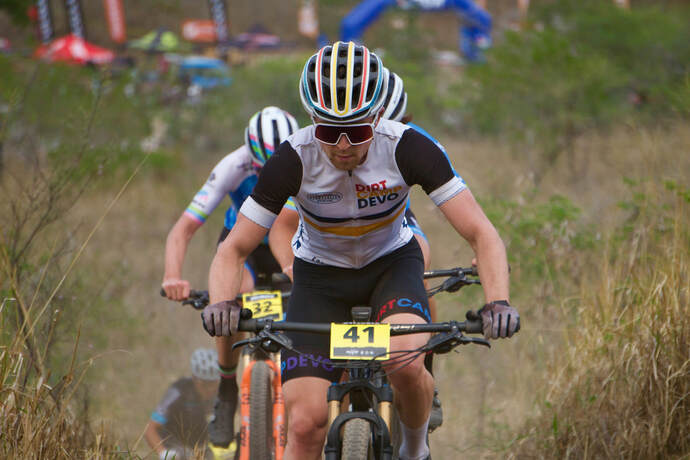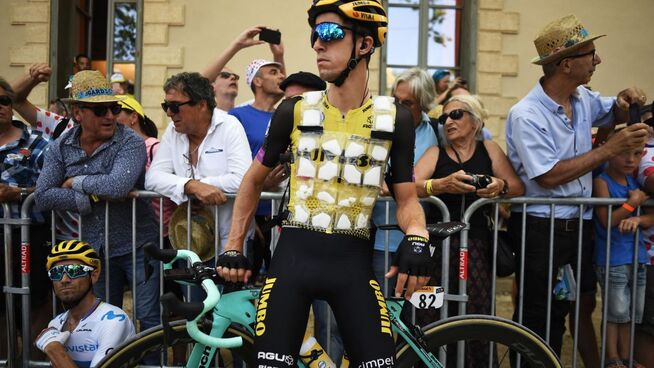|
In a world where we can follow icons of the sport on Strava, see real-time numbers during a World Tour race, and track ourselves while we sleep …where do we draw the line when it comes to data? The accessibility of power meters, heart rate monitors, CGMs, etc. is a great evolvement for the sport, but it makes stepping away from the numbers even harder to do. There’s something to be said for being able to turn off the noise and focus in on our bodies, the task at hand, and how we “feel”. Furthermore, there’s nothing you can do about Van der Poel’s power up the Poggio or what Nino Schurter’s FTP is – it’s about you and your situation.
0 Comments
Building your Race CalendarThe season is winding up and it’s due time to take a look at your race + event plans. Here are 5 of the most important factors to consider when building your calendar to capitalize on your goals!
Heat: “If you can’t handle the heat, stay outta the kitchen.” Or, just get stuck in the kitchen more often. Heat is a tricky thing to tackle when it comes to endurance events. It’s an uncontrollable, inescapable part of competing certain times of the year and in certain locations. Excessive heat (or more specifically the inability to handle it) can lead to an increase in overall core temperature and just a few °F can make things go downhill quickly. The brain starts to realize that there are more important things than you pushing hard on the pedals and will try to put a stop to that. Overall, heat stress will reduce the ability to achieve maximal metabolic rates during exercise. to a Cardiac drift is common term for the increase or “drift” of your heart rate upwards over the duration of an effort/event and is expedited with dehydration or heat. Often, this dance with the discomfort of heat is manageable over the duration of a training session or short XC style event. However, if gone unaccounted for it can lead to a drastic drop in performance. Things may start with discomfort and an annoyingly hot feeling…typically if you are equipped to handle it then it will stay that way. If you can’t, then some dizziness, nausea, and/or waning ability to really focus on the task at hand can follow. Below, I’ll dive into ways to manage the heat from an micro (small) perspective around racing or training + from a more macro (big picture) perspective. Managing The Heat
There are Manny things we can do to mitigate the effect of heat. In the lead up to the big event/workout/race, it’s important to think about your prep 2,3,4 days prior. Firstly, hydration cannot be neglected during these days and a greater importance should be placed on electrolytes. The idea behind this is to increase the essential minerals we need and that especially being sodium; as sodium levels in the body rise, water will follow. Thus, if we slowly increase these minerals we will “hold onto” more fluid in our cells over time. Yes, you will gain a little water weight but SO WHAT if it means mitigating the effect of heat. On race day, keep all your bottles, fuel, etc as cool as you can and try to buffer heat through cooling vests, shade, and less aggressive warm ups. PRO TIP: fill pantyhose with ice and stick them in your jersey collar while getting ready. Acclimatizing [“uh-kli-muh-tizing”) From a bigger picture, and longer timeline, you can prep for key events by acclimatizing to the heat. If it’s during the warmer months or you are in a warmer climate, try moving some of those moderate workouts towards the warmer part of the day….gradually. If it’s the winter months (as my Puerto Rican race trip was) you can leverage sitting in a sauna to get acclimated. This looks like: 7+ days of 20-30min sauna sessions around 180°f if possible and ideally immediately following training. (Check this article out for a scientific review…) Here’s What’s Happening Heat acclimation typically takes around 10-14 days depending on variables. During this time, your body will be learning how to send more blood to the skin quicker, in greater amounts, and more efficiently. One big reason for this is due to the increase in plasma volume in your blood (the fluid part). These processes lead to more liquid coming to the skin which cools you through convection. As you begin to get more acclimated, this typically induces more sweating but less mineral/sodium loss. Additionally, your body’s entire cardiovascular system becomes more responsive and efficient when it encounters this heat stress and the hormonal system is becoming more adapted to this “new normal”. For a detailed interview with someone that has a lot of experience on this subject, see the Trainerroad Podcast with Dr. Minson: https://www.youtube.com/watch?v=b8edDmyhHes |
AuthorCarson Beckett, 26 | Coach, Pro, and Co-Founder of Dirt Camp Racing | Carson Beckett Coaching CategoriesArchives
January 2024
|


 RSS Feed
RSS Feed